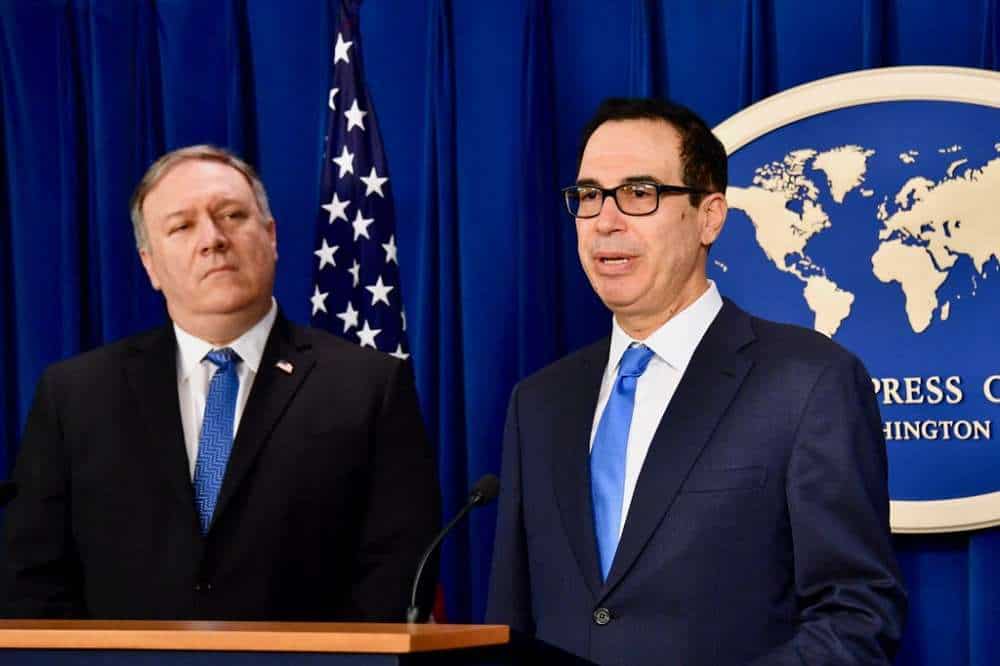Washington: US Treasury Secretary Steven Mnuchin and US Trade Representative Robert Lighthizer will travel to China next week for talks with Chinese officials, the White House said.
Mnuchin and Lighthizer “will travel to Shanghai, China, to continue negotiations aimed at improving the trade relationship between the US and China”, Efe news reported, citing the White House’s statement.
China’s delegation will be led at the negotiations, which start on July 30, by Vice Premier Liu He.
“The discussions will cover a range of issues, including intellectual property, forced technology transfer, non-tariff barriers, agriculture, services, the trade deficit and enforcement,” the White House said.
The trade tensions between Washington and Beijing are rooted in the large deficits posted by the US with China.
In 2018, the US posted a trade deficit of $419 billion with China due, largely, to the fact that US exports to Asia’s largest economy totalled just $120 billion, while American imports from China reached $540 billion.
During the first five months of 2019, the US trade deficit with China totalled $137 billion.
The world’s two largest economic powers have been engaged in a trade war for months, levelling allegations at each other and slapping tariffs on imports.
In May, Trump imposed a 25 percent tariff on Chinese imports worth $200 billion in response to the lack of progress in reaching a trade deal with Beijing.
China, for its part, retaliated by slapping tariffs on US imports worth $60 billion.
Trump later threatened to impose tariffs ranging from 10 percent to 25 percent on another $325 billion of Chinese imports, causing concern in financial markets and the business community due to the possible effect on consumer spending, which accounts for about two-thirds of US economic activity.
In late June, Trump and his Chinese counterpart, Xi Jinping, met on the sidelines of the G20 Summit in Japan and agreed to a truce in the trade war, with Washington holding off on imposing new tariffs on China and allowing US companies to sell products to tech giant Huawei.
The two leaders agreed during their meeting in Osaka to resume trade negotiations amid Washington’s decision to not slap tariffs on all Chinese imports.
While additional tariffs are off the table for now, the United States will maintain the tariffs imposed on a total of $250 billion in Chinese goods, while Beijing will continue to slap tariffs on US imports totalling $110 billion.
On Monday, Trump told reporters that the United States and China were still talking about trade.
“We’re working on trade deals right now. We’ll see what happens,” Trump said.
Another sticking point in bilateral trade relations is the status of Chinese tech giant Huawei, the world’s largest provider of 5G wireless gear.
In May, the US government banned Huawei from selling its products in the country on national security grounds, ratcheting up trade tensions.
The Trump administration later said that Huawei could resume selling some tech products on Aug. 19.
On Monday, executives from seven tech firms, including Google and Intel, met with the president and urged him to make a “timely” decision on Huawei’s operations in the country, the White House said.
Trump met with executives from Google, Intel, Cisco, Qualcomm, Micron, Broadcom and Western Digital at the White House, where they discussed issues related to Huawei’s ban.
The meeting came at a time when tech companies have been pressuring the administration to stick to the promise made by Trump at the G20 Summit to allow Huawei to sell chips and other components to American businesses.
The ban on Huawei has prevented firms, such as Google, from doing business with the Chinese tech company.

